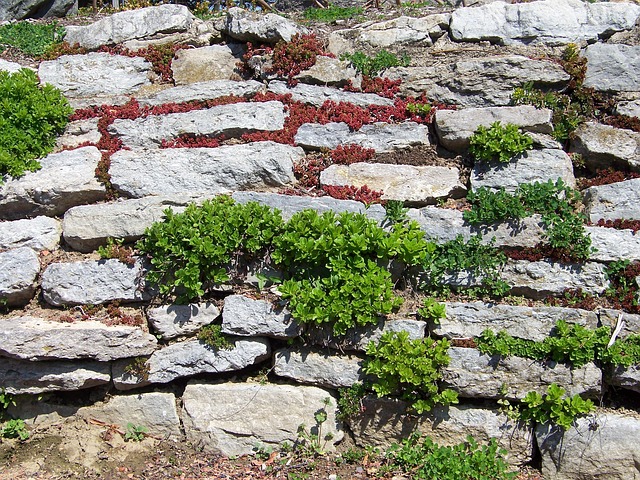I recently took a refresher course in structural engineering, specifically retaining structures, and have been working with the typical examples, such as big concrete poured walls or block walls. As an engineer, I find design and physics fascinating. Still, as an eco-friendly professional, I often find these retaining walls necessary for the construction but not necessarily the most beautiful component.
And even though there have been “plantable” retaining walls available for decades, we still see a lot of the more conventional types going up. This is partly due to economics but also because of their structural integrity. That said, many of the more eco-friendly walls are as soundly strong as the block or concrete poured ones.
The “plantable” walls, such as the one shown in the image above, not only serve the purpose of retaining soil when there is a need to mitigate the difference in elevations, but they are also aesthetically pleasing and provide a sustainable alternative. In addition, plantable walls provide additional landscaping surface, absorb rainwater, reduce or even preclude the need for stormwater drainage, and help reduce the heat island effect by partly or entirely replacing a concrete surface with soil and landscaping. And although plantable walls may not be as inexpensive as other types of walls, typically, the difference in cost is not much higher, plus the aesthetics they bring to any backyard or other built site make up for any cost differential. Also, a backyard green or living wall adds more value to any home or other real property.
Whether you decide to build a conventional retaining structure or a plantable one, they must be accurately and efficiently designed and built, which requires hiring the right engineer for the design and the appropriately licensed contractor to execute the construction. Because not only can a failure in the wall cause severe property damage, it can also be life-threatening. Additionally, even if a wall does not completely fail and collapse, poor design and construction can lead to warping, inadequate drainage, and cracking. Also, a poorly designed and constructed retaining structure at the property line can cause damage to an adjacent property, which can expose the owner to liability and potential lawsuits.
Suppose you are a property or site owner, an architect, a developer, or any other project stakeholder. In that case, it is essential to consider your project’s lifecycle and its impact on the environment and even the community in some cases. Therefore, every piece of the built environment you design and build should be assessed for its long-term benefits and impact. And when it comes to the subject of retaining walls, keep in mind that in addition to the environmental advantages I wrote above, these walls are typically interlocking and can be removed and reused relatively easily, which is not the same case with block or concrete walls. These must be demolished and recycled but cannot be reused.

